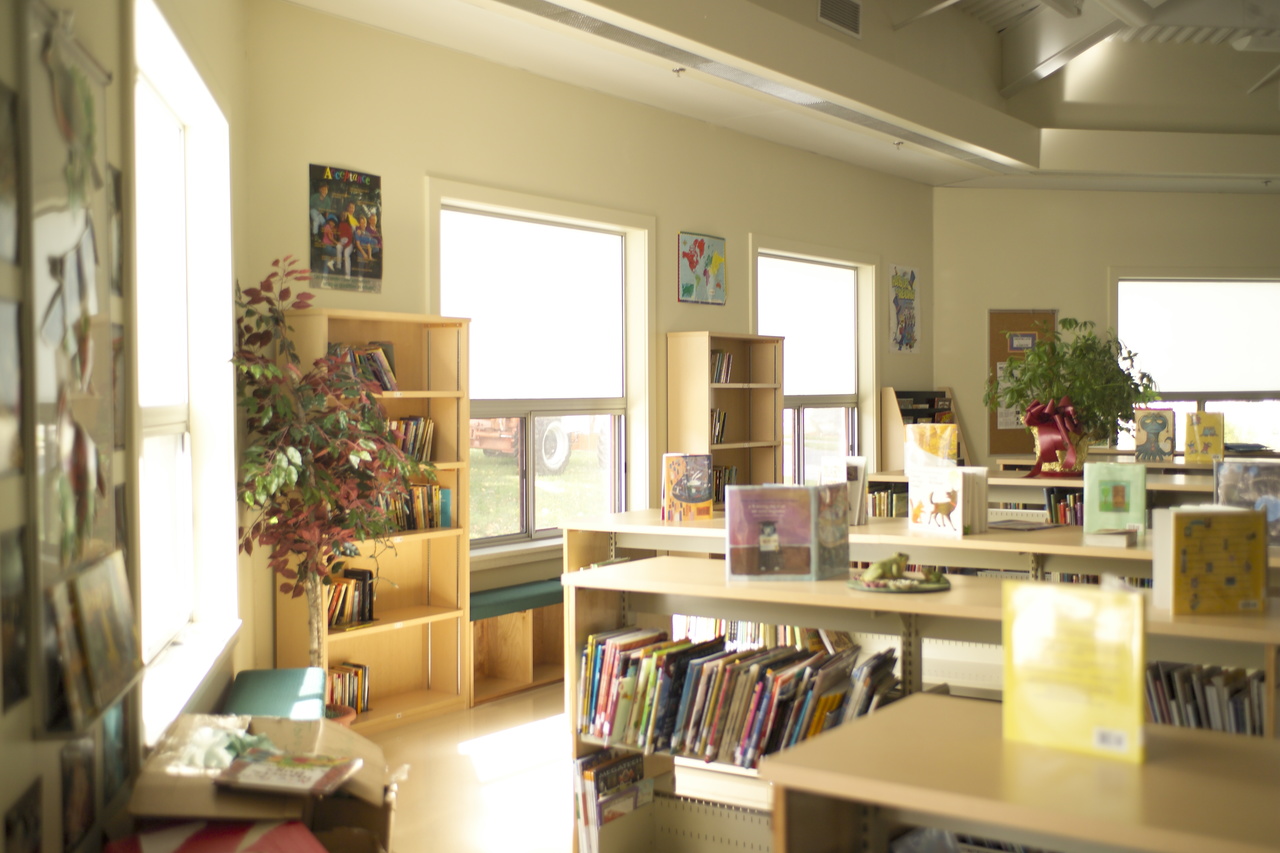Project
Brookland Elementary School
Location
Sydney, NS
Architect
Harvey & MacKenzie Ltd. Halifax, NS
R-Value
R5
VLT
46%
Product Used
Solera® S
U-Value
0.20 Btu/hr·ft²·℉
STC
>45








It’s not easy to break with tradition in one of the older settlements in North America. But when a new grade school was being planned in Sydney, Nova Scotia to replace a well-worn complex of buildings, the key stakeholders involved decided to do exactly that. The resulting new facility incorporates not only new electronic building controls and teaching equipment, but an entirely new approach to harvesting daylight in the classroom.
Vision glass is a popular architectural feature of schools. Unfortunately, vision glass is not a successful daylighting strategy and, more often than not, windows will lead to glare, overheating and unacceptable levels of contrast within a classroom. Window coverings and other means of blocking direct sunlight are considered essential used, but, when used by teachers, have a tendency to remain constantly closed. This undermines opportunities for daylighting.
Mike Harvey, senior partner at architect firm Harvey MacKenzie, was tasked with creating Brookland Elementary in an older, well-established neighborhood. The land was well-positioned on an open green space, with the adjacent streets lined with stately, mature trees.
When it came to glazing options, Harvey notes that school designs specify a certain ratio of glazing to floor area . . . yet “all that vision glass ends up being occluded with blinds”.
“You walk into the classroom and they have the blinds down half-way,” says Harvey, “Why bother installing clear vision glass just to have all that light blocked out?”
Don Lohnes is an architect employed by Nova Scotia’s Department of Education to work with local school boards on new school design. According to Lohnes, window coverings present a maintenance challenge for the school boards. The appearance of blinds and curtains can quickly deteriorate, and it is a challenge to find money in the budget to maintain them.
Lohnes became interested in Solera for several practical reasons including its contribution to their LEED strategy for the building. He saw that Solera would eliminate the need for blinds, provide better quality light and save energy due to Solera’s high insulation value and the reduced need for artificial lighting.
By the time Lohnes and Harvey charted this new direction, Brookland’s school design and class-room configuration had already been laid out. Solera was incorporated as a last minute add-in. Despite this, says Harvey, Solera’s flexibility as a product made it “easy to incorporate in a variety of window configurations.”
Brookland Elementary features standard punched window, where Solera S is integrated in window framing systems above vision glass sliders. This configuration allows all the advantages of diffuse daylighting from the translucent glazing while maintaining the aesthetic and functional value of vision glass.
This was Harvey’s first translucent daylighting project and he was concerned there might be some negative feedback because of the reduced amount of vision glass. Instead he found only positive feedback.
“I have no doubt about the way it performs in terms of daylighting,” says Harvey, “Some teachers just keep the lights off so we can save energy and improve the light quality. The kids are even asking the teachers to turn the lights off. There is enough light without the artificial lights on and the light quality is better. It is excellent.”
Brookland Elementary teacher, Neeta Kumar, keeps most of the artificial lights turned off in her classroom. She notes that the use of an LCD projector is not a problem, with an appropriate projector, screen and positioning to match the daylighting levels delivered by Solera. Kumar describes a good quality, evenly distributed light that is having a distinct effect on her students.
“I find it very calming and relaxing,” notes Kumar, “Less of a feeling of an institution. I have had other teachers come in to the classroom and say ‘Is it ever calm in here!’ The atmosphere is very conducive to my style of teaching.”
The elegant glass exterior of Solera blends seamlessly with the vision glass below it, creating a visually appealing building envelope. Unlike plastic translucents, the appearance of Solera will not deteriorate over time. The combination of vision glass and Solera in Brookland Elementary will maintain their function and beauty over the building’s entire life cycle.


